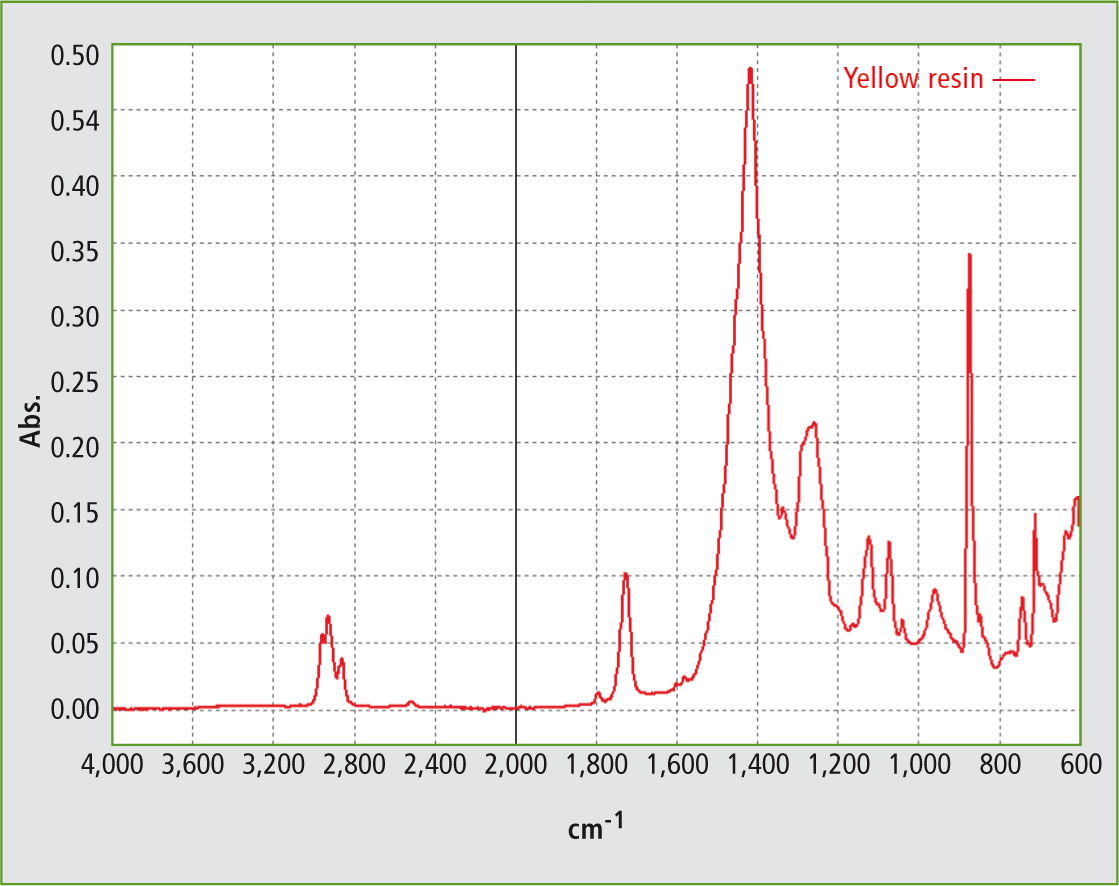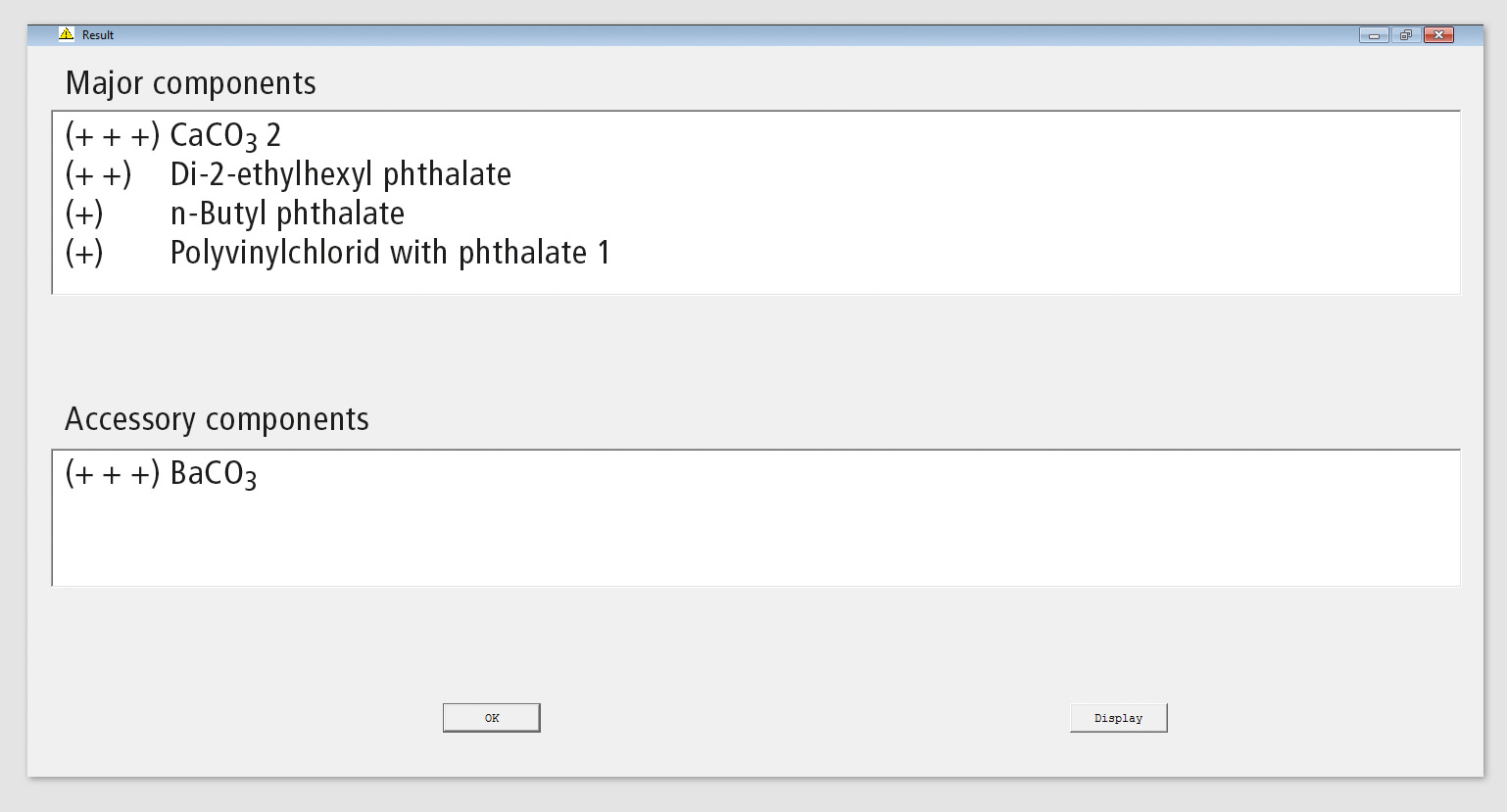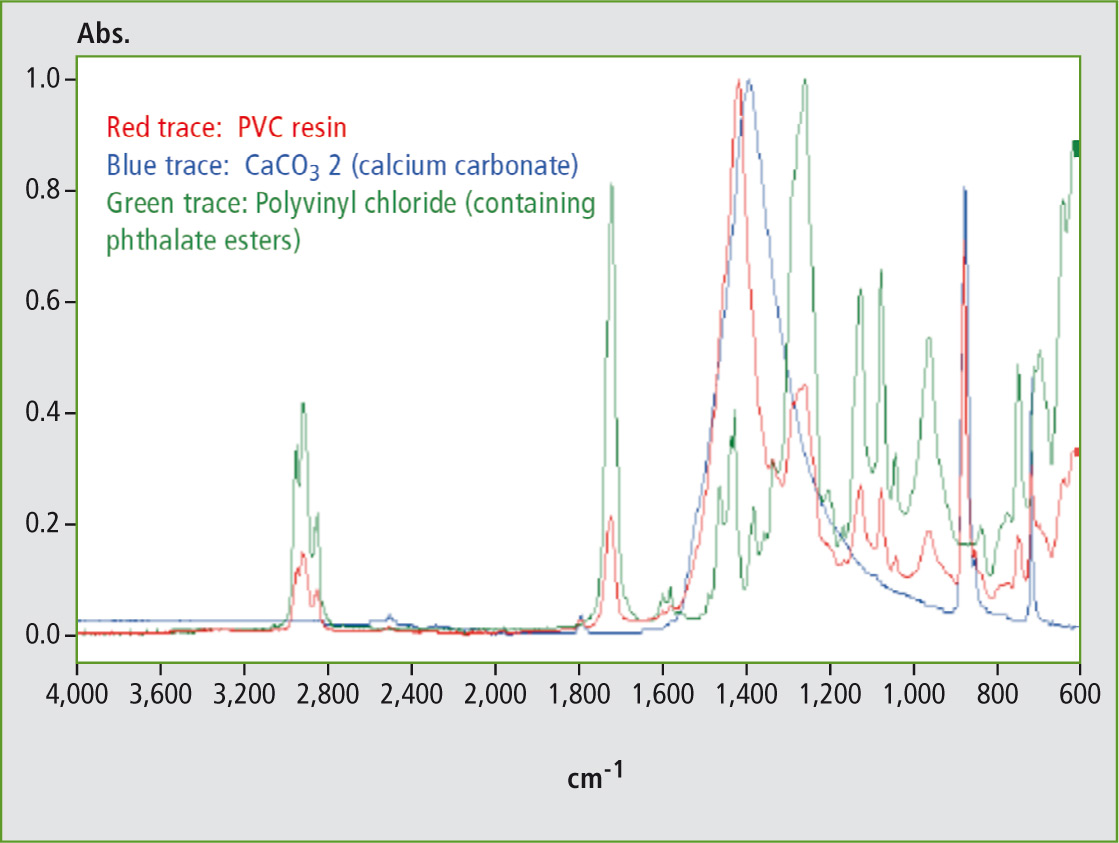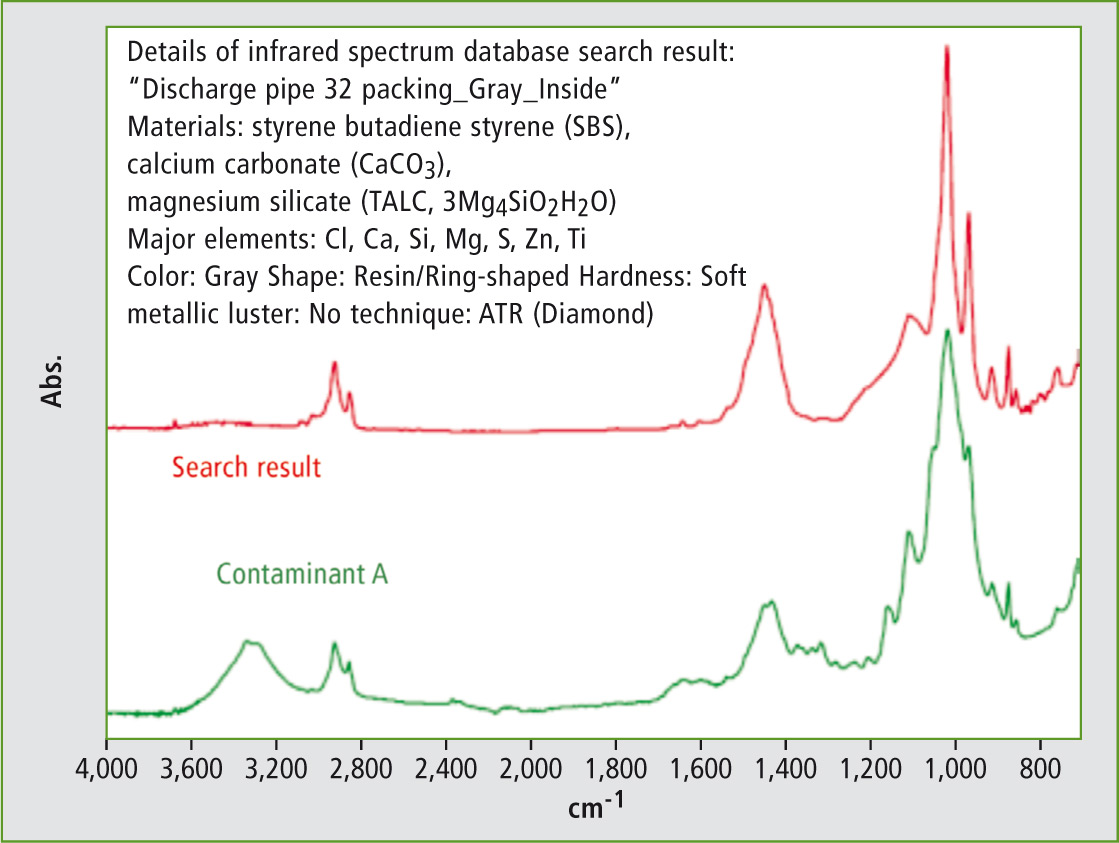Identify different sources of contamination
Applications with IRTracer-100 and »Contaminant Analysis« software
 IRTracer-100
IRTracer-100
Infrared spectroscopy as classical analysis has been a major technique for the identification of solid materials with KBr pellet and cell techniques for liquid samples. Nowadays, other reflection style measurement methods are increasingly being used.
Users need a new view on spectra, because the measurement results not only include air from the atmosphere, but also extra signals from the accessory, e.g. a diamond profile. Finally, the spectrum is contaminated by accessory absorbance or reflection.
A different class of contaminants can be particles in materials which as impurities restrict the quality of use (uneven, broken etc.). Contamination due to organic and inorganic compounds can be present in different media, such as tap water. In this application, methods are shown which are designed to assist in the identification of contaminants.
Contaminant analysis software for complex challenges
The new IRTracer-100 system with its new LabSolutions IR software platform enables complete application analysis, e.g. a contaminant analysis. In such cases, it often happens that the contaminant consists of a mixture of several substances. A conventional search result covers just one of the main components and needs further expertise to identify the remaining unknown substances. The Contaminant analysis software sorts out such complex identification.
 Figure 1: ATR spectrum from PVC resin measured with a diamond reflection unit
Figure 1: ATR spectrum from PVC resin measured with a diamond reflection unit
The LabSolutions IR program offers two main application fields, i.e. Transmission and ATR (Attenuated Total Reflection) mode. 533 spectra (typical contaminants) are contained in specific libraries which are used for sophisticated searching. The search algorithm has been improved to also enable precise re-identification of inorganic material. As an example, a resin was selected.
Several infrared spectra in vinyl chloride resin
Several types of additives are added to resin materials to enhance their material properties. Each one has its own infrared spectrum overlaying the main material spectrum.
In the following article, results of a vinyl chloride resin are presented. The sample was prepared with a diamond-based single reflection unit, the DuraSamplIR, and analyzed by Contaminant analysis program using ATR measurement technique. Result of the analysis indicates phthalic ester present in PVC and calcium carbonate (see figures 2 and 3). These additives are commonly used as plasticizer and non-reinforcing filler respectively in PVC products.
 Figure 2: Analysis results using the contaminant analysis software, listing with judgment levels
Figure 2: Analysis results using the contaminant analysis software, listing with judgment levels
 Figure 3: Spectra output window for direct comparison of search results from the library
Figure 3: Spectra output window for direct comparison of search results from the library
Contaminants in tap water
A different approach in identifying unknown materials is the analysis of inorganic and organic contaminants in tap water. They can originate from different sources, such as tap water system materials, minerals and microorganisms. Major contaminant sources include rubber and metallic components resulting from degradation of the water supply system.
The tap water analysis program includes two databases for FTIR and EDX analysis. As soon as a run is started, the system identifies the IR-Spectrum and gives additional information based on the EDX analysis of various materials.
An example of analysis is shown on the right (figure 4).
 Figure 4: Combination with the EDX database allows judgment of the contaminant’s color or other characteristics
Figure 4: Combination with the EDX database allows judgment of the contaminant’s color or other characteristics
Conclusion
With dedicated knowledge bases such as libraries or databases, it is easy to analyze contaminants. Mixtures, e.g. polymers, are easy to identify. The software can be adapted for contaminant analysis in environmental, petrochemical and food fields.